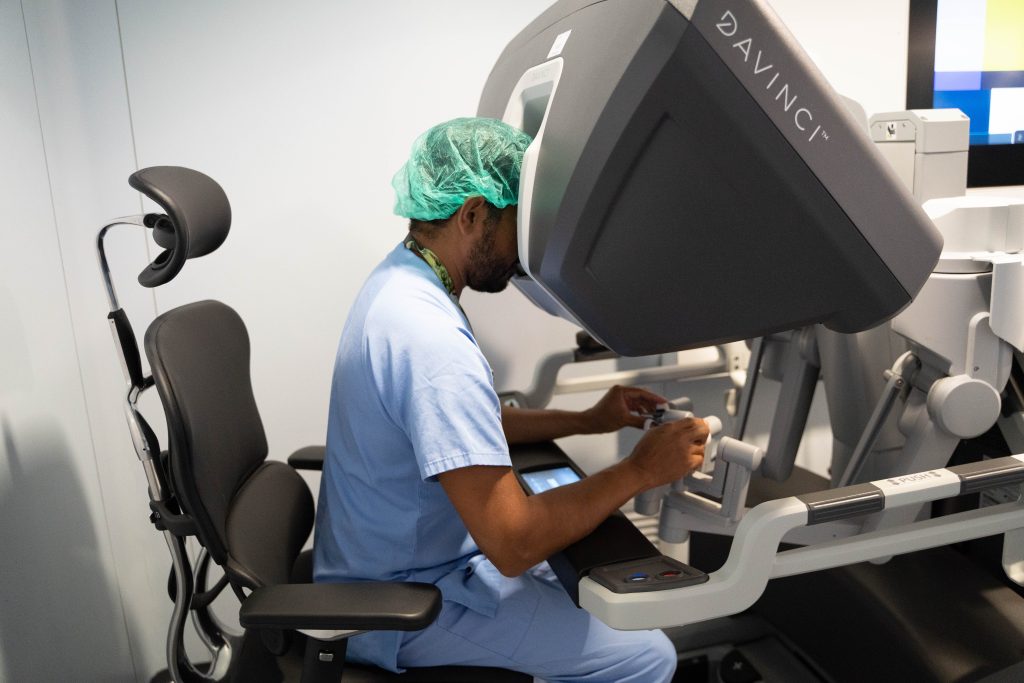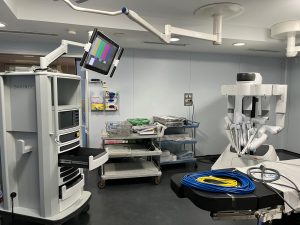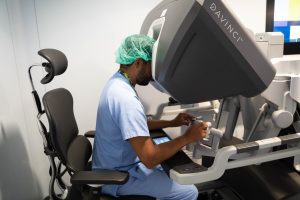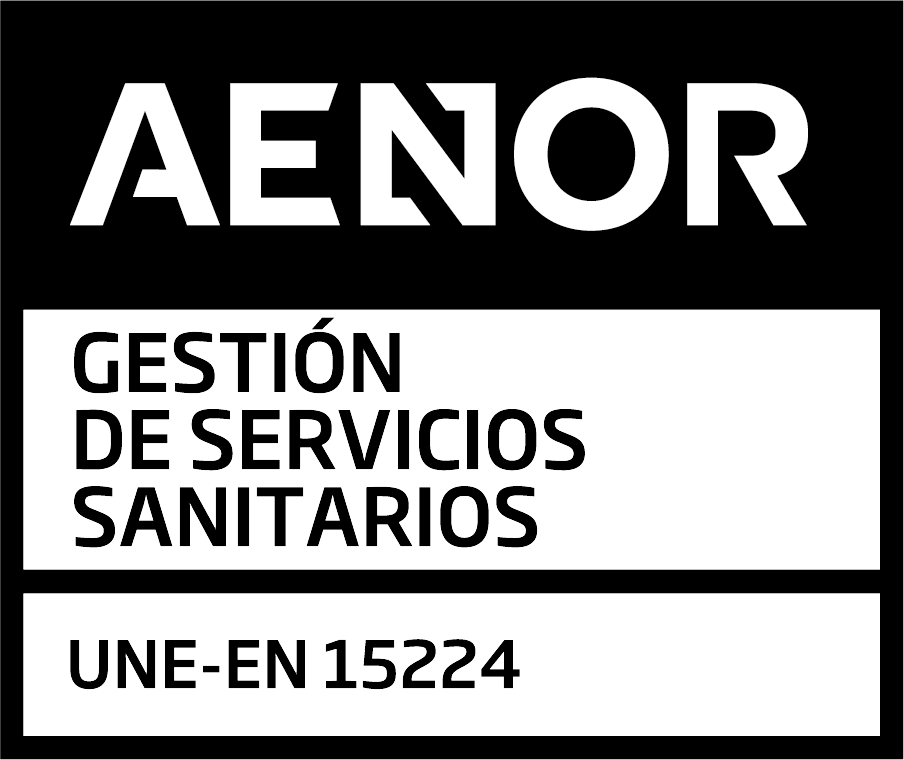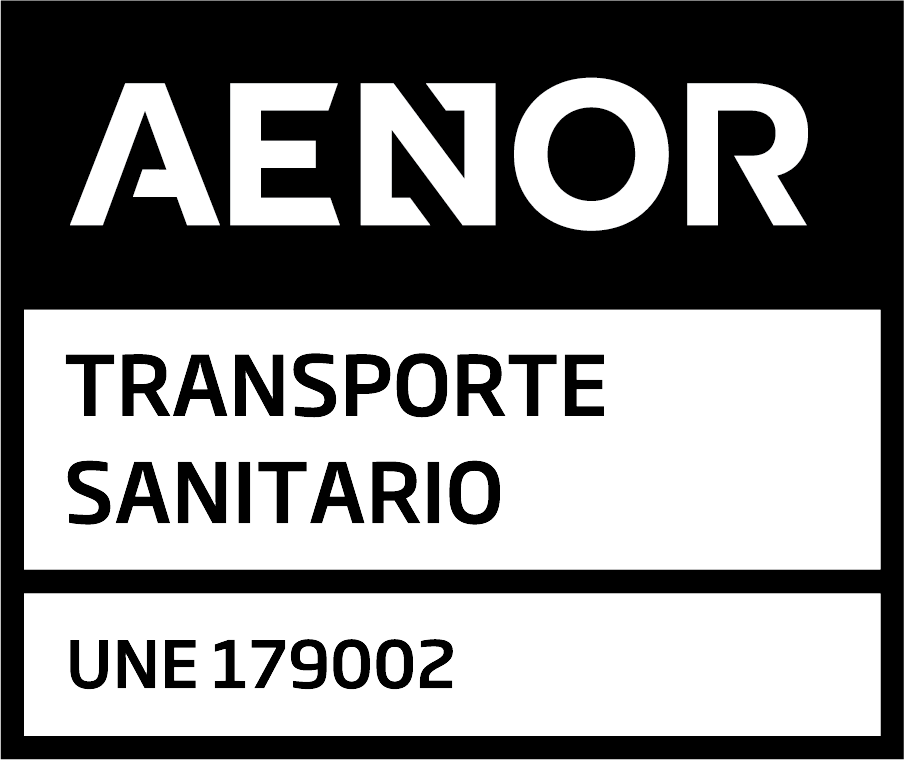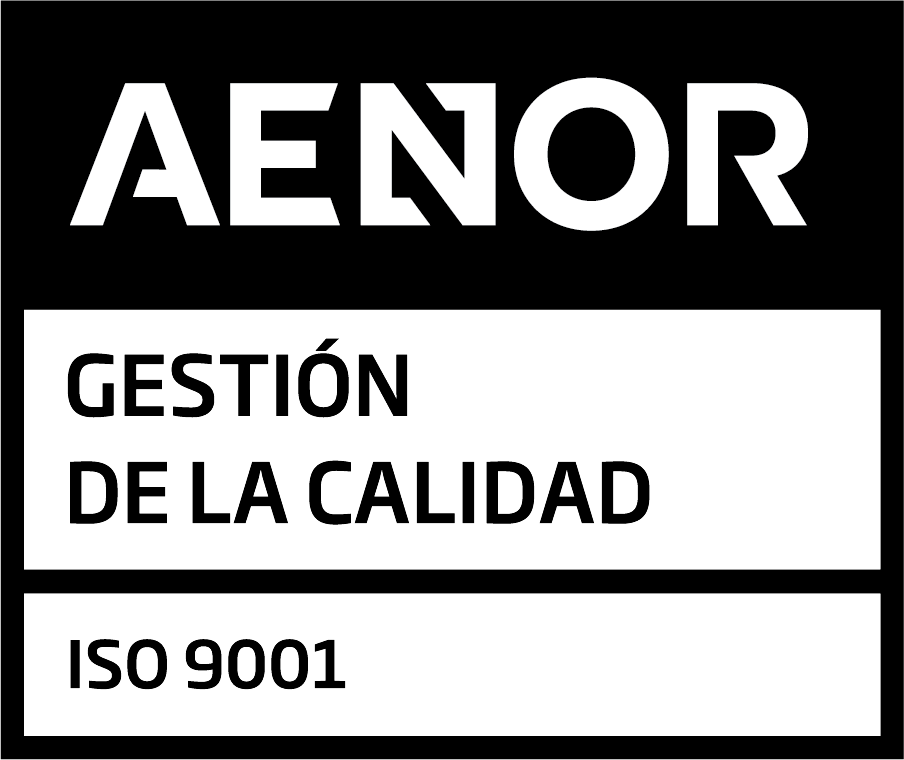– Robotic surgery represents a before and after in the surgical approach to this ailment, reducing the hospital stay by 4 days and allowing recovery of daily activity in 48-72 hours after discharge.
– Abdominal wall hernia is a common pathology and can affect both children and adults.
– It occurs when part of an organ or tissue protrudes through the weakened abdominal wall.
Ibiza, 17 November 2023. Robotic surgery has come to revolutionize the way in which many interventions are performed, some of them more complex and others more common. Fewer complications, a much shorter recovery time, greater precision for the surgeon and a quicker return to daily activities for patients are the main advantages offered by robot-assisted surgery, making any intervention easier and simpler.
In the case of abdominal wall surgery, robotics has opened up new paths, “making it possible to integrate the advantages of dissection in open surgery with those of minimally invasive surgery”, as Dr. Leopoldo Salvatierra, a surgeon from Grupo Policlínica, points out. In other words, the same results are achieved as in open surgery, in this case with the minimum incision. With this technique, patients reduce their stay in hospital from 5-8 days, which is usual in open surgery, to between one and four days, and they can return to their daily activities within 48-72 hours after discharge, with some restrictions for heavy lifting or heavy exertion.
Grupo Policlínica recently carried out a series of abdominal wall operations using a highly innovative approach assisted by the Da Vinci robot, which allowed eight patients suffering from anterior abdominal wall hernia to undergo surgery in a minimally invasive manner. Previously, the abdomen had to be opened completely; in this case, small incisions of 1 to 4 cm were sufficient, through which large resections could be made, the hernia repaired and the abdominal wall reconstructed, allowing for a shorter hospital stay, less pain and discomfort, and less visible scarring.
“Robot-assisted surgery allows us to work with much greater precision in very small spaces, increasing the possibilities of the intervention itself,” says Dr Salvatierra. “It also allows us to reconstruct the layers of the abdominal wall effectively and to place wider meshes that help restore muscle function prior to the onset of the hernia. And all this with much better postoperative conditions,” he adds.
This cutting-edge approach, which also makes it possible to operate more safely on obese patients, is the technique of choice for surgeons ahead of laparoscopy, provided the patient meets the necessary conditions: “It is not yet the most common because not all centers have a Da Vinci robot, but of course surgeons opt, whenever the situation allows it, for this type of operation, which greatly improves the quality of life of patients in the postoperative period and offers equally or more effective results,” says the specialist.
A common but potentially serious condition
A hernia occurs when part of an organ contained in the abdomen or tissue protrudes through the abdominal musculature because it is weakened or ruptured. The patient notices a soft lump, which can be pushed back in, but which will come out again with any abdominal strain, such as a simple cough, or spontaneously. Over time, the bulge always remains outside, with no possibility of reintroducing the tissue.
The hernia can cause pain and discomfort and can also create a potentially serious situation if the tissue becomes strangulated and does not receive the blood supply, as in this case gangrene can occur, which requires immediate medical attention as it could be fatal.
In general, patients may not have any symptoms, but when the hernia causes pain and grows, surgery is recommended; in fact, abdominal wall hernia surgery is the most frequent operation, accounting for up to 50% of all operations performed in a general surgery department.
Any activity or problem that excessively increases the pressure on the abdominal tissue or muscles and weakens or breaks them can lead to the appearance of an abdominal hernia, for example constipation, a chronic cough, pathologies that force you to make efforts to urinate, overweight, physical effort such as weight lifting, cystic fibrosis… Abdominal hernias can also be congenital or secondary to another operation in the area.

